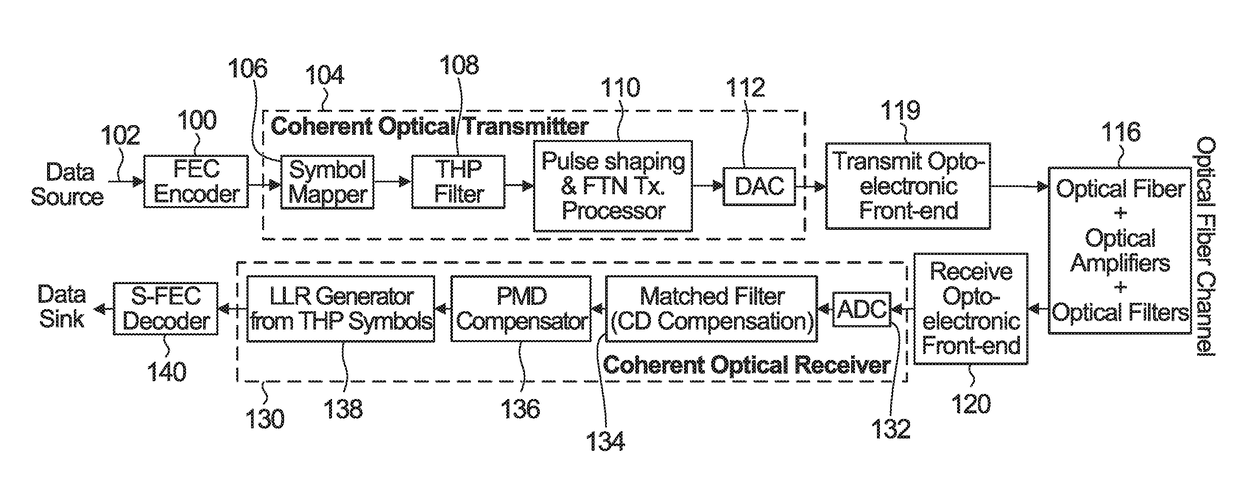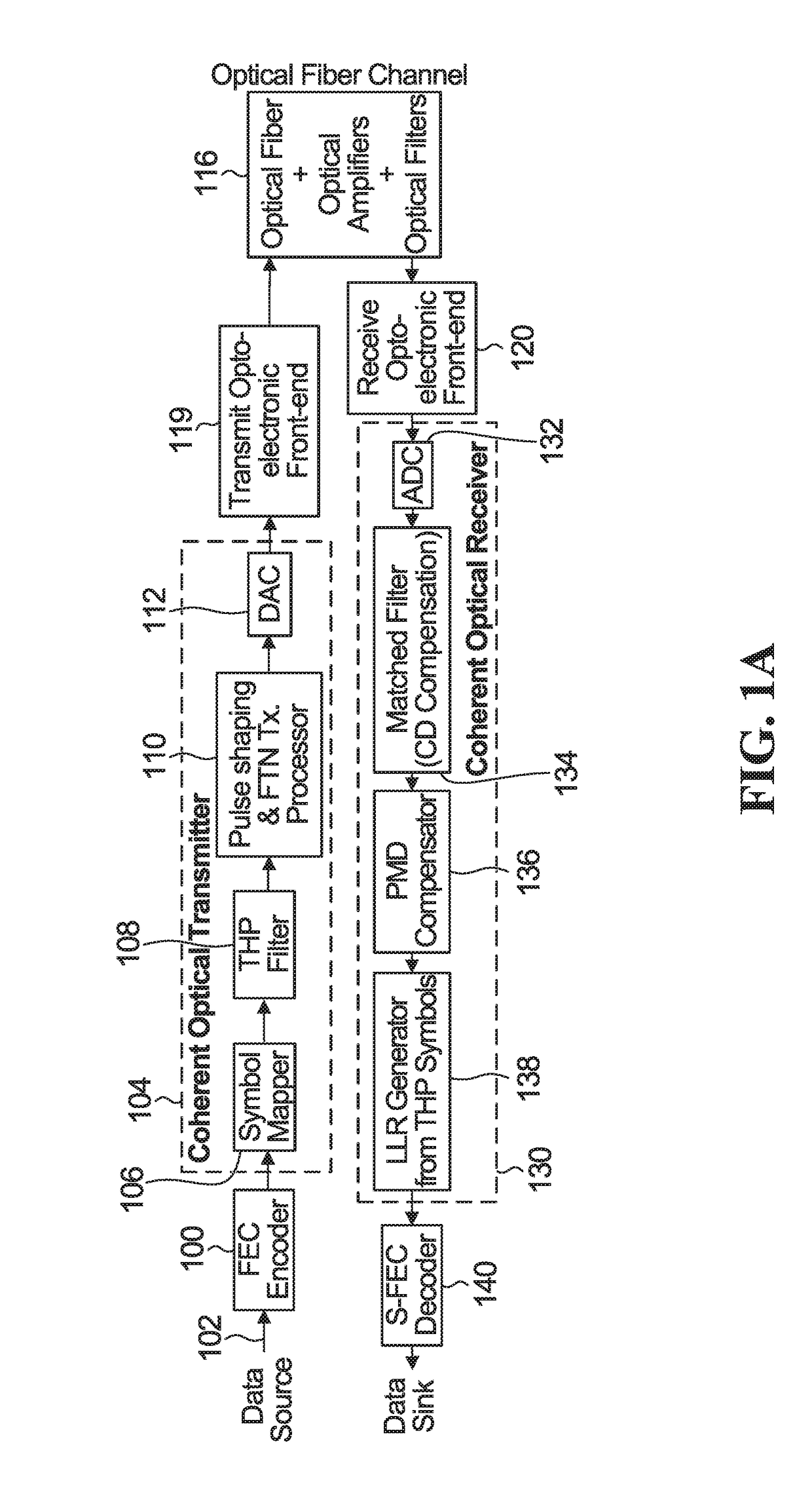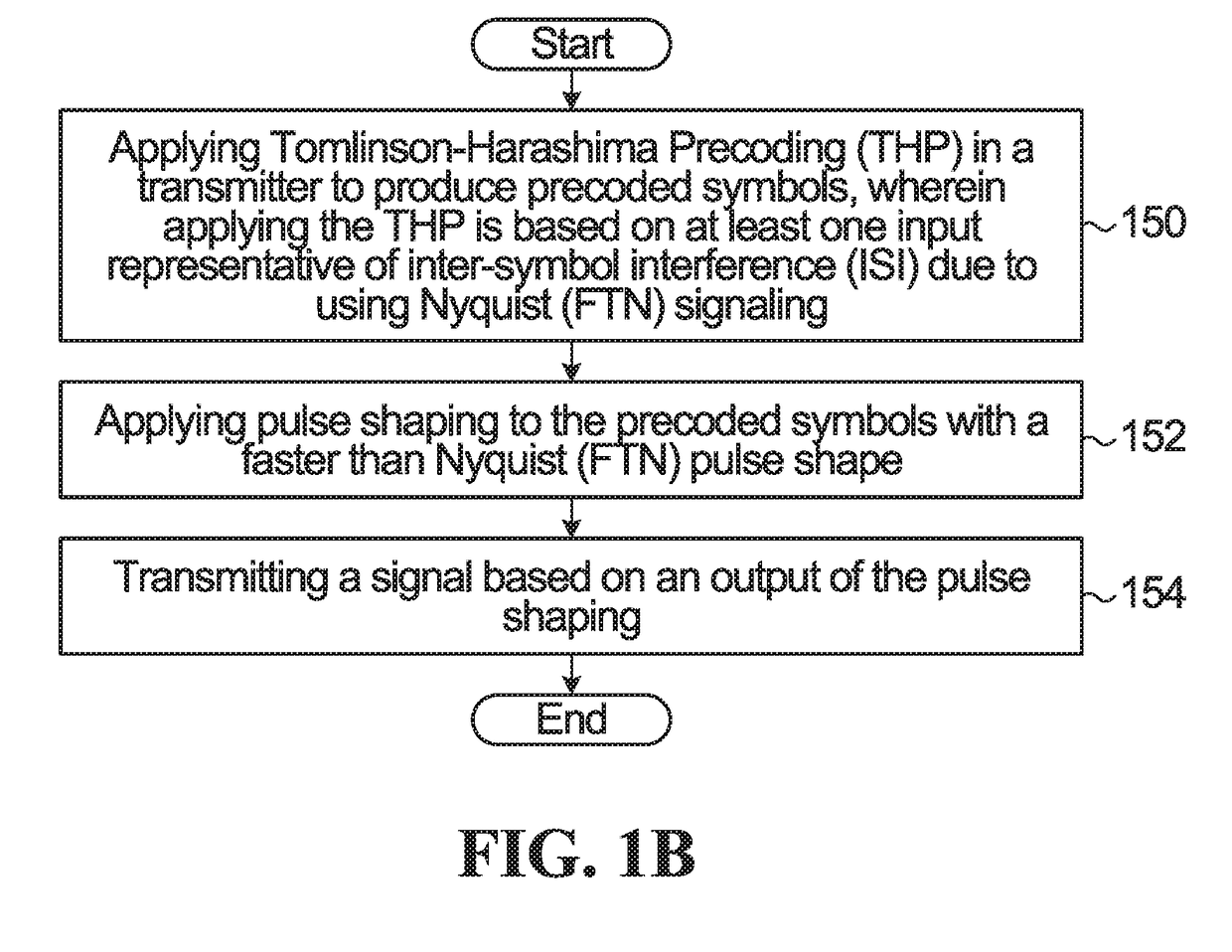System and method for precoded faster than nyquist signaling
a technology of nyquist signaling and precoded signals, applied in the direction of transmission, transmitter/receiver shaping network, polarisation/directional diversity, etc., can solve the problem of large error propagation problem, known major issue of error propagation, and associated “modulo loss” and other problems, to achieve the effect of increasing bandwidth utilization
- Summary
- Abstract
- Description
- Claims
- Application Information
AI Technical Summary
Benefits of technology
Problems solved by technology
Method used
Image
Examples
example performance
Results
[0058]In order to show the benefits of the described methods, considered is a 1000 km standard single mode fiber (SSMF) with chromatic dispersion (CD) parameter value=−22.63 ps2 / km and polarization mode dispersion parameter 0.8 ps / √{square root over (km)}. Other parameters considered for the simulation are: pulse shape h(t) is a RRC pulse with β=0.3, FEC coding is LDPC coding rate=0.8 and Baud rate=32 / τ Gbaud / s. At the receiver a noise whitening-filter is used before the chromatic dispersion (CD) and polarization mode dispersion (PMD) compensation followed by the memoryless EAD. Example performance results are shown in FIGS. 5 and 6. Examples of possible improvements from using the Sliding Window EAD are depicted in FIGS. 7A and 7B where an increase in the value of the number of symbols considered in the vicinity of the kth symbol is shown to improve performance compared to the memoryless EAD and correspondingly bridges the gap from the optimal MAP equalizer. In FIG. 7A, show...
PUM
 Login to View More
Login to View More Abstract
Description
Claims
Application Information
 Login to View More
Login to View More - R&D
- Intellectual Property
- Life Sciences
- Materials
- Tech Scout
- Unparalleled Data Quality
- Higher Quality Content
- 60% Fewer Hallucinations
Browse by: Latest US Patents, China's latest patents, Technical Efficacy Thesaurus, Application Domain, Technology Topic, Popular Technical Reports.
© 2025 PatSnap. All rights reserved.Legal|Privacy policy|Modern Slavery Act Transparency Statement|Sitemap|About US| Contact US: help@patsnap.com



